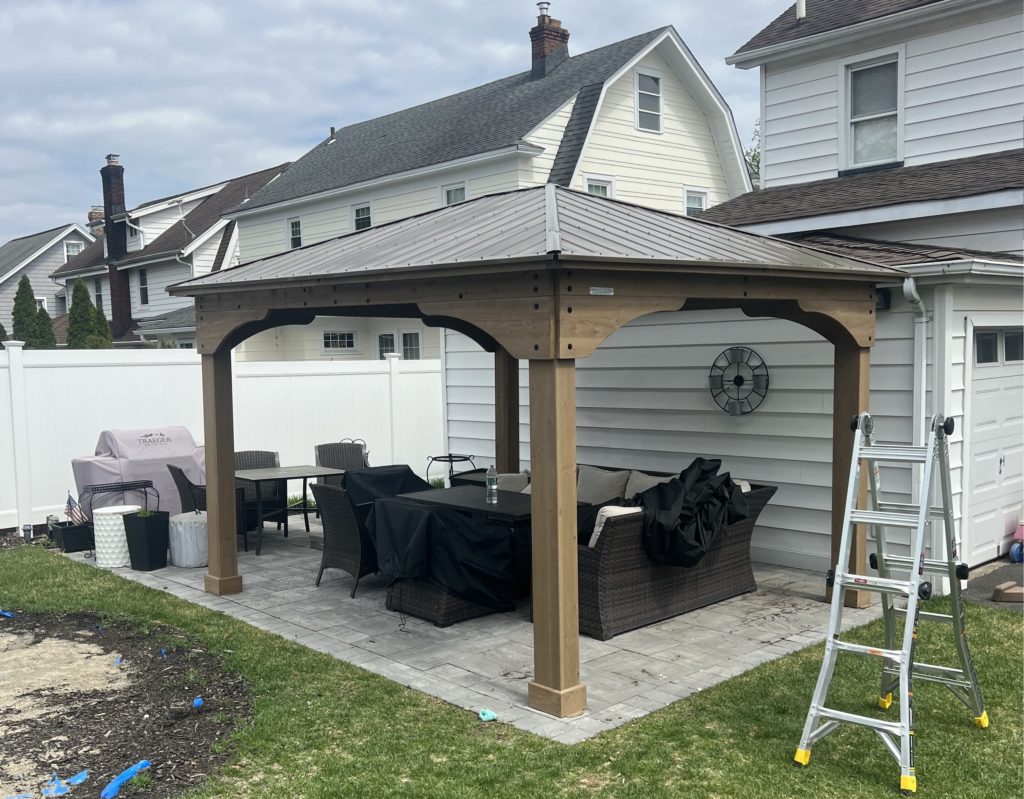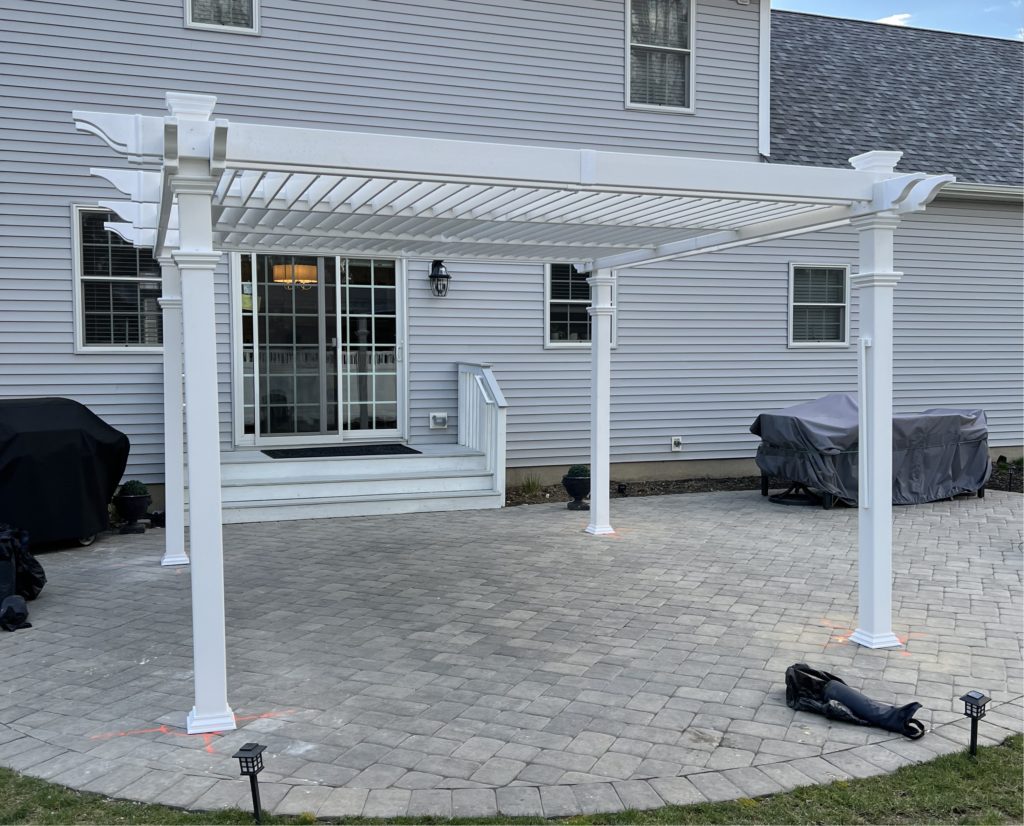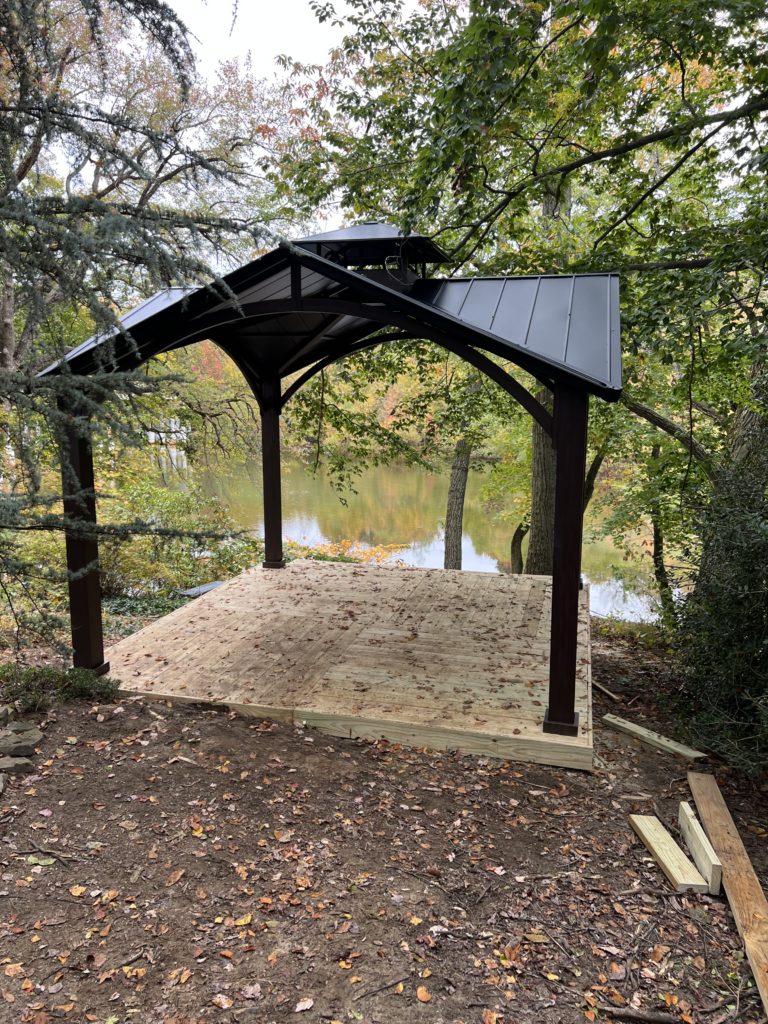When it comes to maintaining the integrity of your home or commercial space, one of the most common issues property owners face is damaged drywall. From small holes and cracks to larger water damage and structural issues, drywall problems can be unsightly and compromise the safety and aesthetics of your space. That’s where professional drywall repair services in Pluckemin, NJ come in.
OUR CONTACT
Email Support:
info@gazebo-installation.com
Ask your question:
info@gazebo-installation.com
Some of Our Portfolio Gazebo and Pergola Assembly Projects



Pluckemin is a charming town in Somerset County, NJ, known for its beautiful homes and well-maintained properties. But even the most well-kept spaces can experience drywall issues over time. Whether it’s due to normal wear and tear, accidents, or water damage, it’s crucial to address drywall problems promptly to prevent further damage and costly repairs.
Fortunately, there are skilled drywall repair experts in Pluckemin who specialize in restoring damaged walls to their original condition. These professionals have the knowledge, experience, and tools necessary to handle a wide range of drywall issues, no matter the size or complexity.
By hiring a reliable drywall repair service in Pluckemin, NJ, you can ensure that your property remains in top shape. From patching up small holes and cracks to replacing portions of severely damaged drywall, these experts will provide a seamless repair job that blends seamlessly with your existing walls. Their meticulous attention to detail and commitment to quality craftsmanship will leave you with a smooth, flawless finish you’ll be proud to show off.
7 Common Drywall Issues and How to Fix Them
Drywall is a popular building material used for walls and ceilings in homes and commercial buildings. While it is durable, there are common issues that can arise over time. Here are seven common drywall issues and how you can fix them:
1. Nail Pops
Nail pops occur when the drywall nails or screws become loose and push through the surface, creating a bump or small hole. To fix this issue, carefully remove the loose nail or screw and replace it with a new one. Then, apply spackle over the hole and sand it down until smooth.
2. Cracks
Cracks in drywall can be caused by settling, temperature changes, or inadequate installation. To fix small cracks, use a putty knife to apply joint compound over the crack, feathering the edges. For larger cracks, use joint tape, followed by joint compound. Sand the area smooth once the compound has dried.
3. Water Damage
Water damage can cause drywall to become soft, discolored, or develop mold. Before repairing water-damaged drywall, identify and fix the source of the water leak. Once the area is dry, remove any damaged portions of drywall and replace them with new sections. Finish the repair by applying joint compound and sanding it down.
4. Peeling Paint
Peeling paint on drywall is often caused by moisture, poor adhesion, or an incompatible primer or paint. To fix peeling paint, scrape off the loose paint with a putty knife and sand the area. Then, apply a primer and repaint the surface.
5. Sagging Ceiling
A sagging ceiling is usually a result of moisture damage or an inadequate support structure. Fixing a sagging ceiling requires careful attention and professional help. It may involve reinforcing the structure or replacing the affected drywall entirely.
6. Holes
Small holes in drywall can result from nails, screws, or accidental damage. To fix small holes, apply spackle or joint compound with a putty knife and smooth it over. For larger holes, use a drywall patch or a piece of replacement drywall. Secure the patch in place and finish with joint compound and sanding.
7. Textured Surface Repair
If the textured surface of your drywall becomes damaged, it can be challenging to replicate the original texture. A common method to repair textured surfaces is to use a spray texture repair kit. Follow the instructions on the kit to blend the texture and match it with the surrounding area.
While these common drywall issues can be addressed through DIY methods, it’s important to assess the severity of the problem and consider professional assistance if needed. Hiring a professional drywall repair service can ensure a high-quality and long-lasting solution.
Cracks in Drywall: Causes and Solutions
Cracks in drywall are a common problem that many homeowners in Pluckemin, NJ, encounter. These cracks not only affect the aesthetic appeal of a room but can also indicate underlying structural issues. It is important to understand the causes of these cracks and the solutions available to repair them effectively.
Causes of Cracks:
- Settlement: One of the main causes of cracks in drywall is the natural settling of a building over time. As the foundation of a house shifts or settles, it can put stress on the walls, resulting in cracks.
- Moisture: Excessive moisture can weaken the drywall, making it more susceptible to cracking. Water leaks, high humidity levels, or poor ventilation can all contribute to this problem.
- Temperature Changes: Extreme temperature fluctuations can cause the materials in a wall to expand and contract. Over time, this repeated movement can lead to cracks.
Solutions for Repair:
- Joint Compound: For small cracks, using joint compound to fill and smooth the surface is often sufficient. This is a relatively simple and cost-effective solution that can be done by homeowners themselves.
- Drywall Tape: In the case of larger cracks or ones that reoccur, applying drywall tape over the crack before using joint compound can provide added reinforcement.
- Professional Repair: If the cracks are extensive or indicate a more serious underlying issue, it is advisable to seek the services of professional drywall repair experts. They have the expertise to identify the root cause, make necessary repairs, and ensure a seamless finish.
By addressing cracks in drywall promptly and choosing the appropriate repair solution, homeowners in Pluckemin, NJ, can maintain the integrity and appearance of their walls. Regular maintenance, including fixing cracks, can help prevent further damage and ensure the longevity of the drywall.
Understanding Drywall Water Damage and Restoration Techniques
Water damage can significantly impact the integrity and appearance of drywall in homes and buildings. Whether it’s due to a burst pipe, leaking roof, or flooding, it’s crucial to understand the extent of the damage and implement proper restoration techniques to prevent further issues.
When drywall is exposed to water, it can become weakened, discolored, and develop mold or mildew growth. The first step in restoring water-damaged drywall is to identify the source of the water and address the underlying issue. Once the water source is fixed, the affected drywall needs to be thoroughly dried out before any repairs can begin.
Drying out the drywall:
- Open windows and doors to increase airflow and ventilation in the affected area.
- Use fans and dehumidifiers to expedite the drying process.
- Remove any wet insulation or other materials that may be trapping moisture.
- Monitor the moisture levels using moisture meters to ensure the drywall is completely dry before proceeding with repairs.
Repairing water-damaged drywall:
- Inspect the drywall for any structural damage or sagging. If significant damage is present, it may be necessary to replace the affected section.
- Cut out any visibly damaged or discolored areas using a utility knife.
- Smooth the edges of the cut section and ensure it is clean and dry.
- Apply a primer to the exposed drywall to prevent mold growth.
- Once the primer is dry, apply joint compound to fill the gaps and create a smooth surface.
- Sand the repaired area to achieve a seamless finish.
- Apply a fresh coat of paint that matches the surrounding wall color to complete the restoration.
It is essential to hire professional drywall repair services in cases of extensive water damage. They have the expertise and tools needed to handle the restoration process efficiently and effectively, ensuring that your drywall is restored to its original condition.
Drywall Hole Repair: Patching Methods and Step-by-Step Guide
When it comes to drywall repair, one of the most common issues homeowners face is dealing with holes. Whether caused by accidents, furniture, or fixtures, these unsightly holes can be easily patched up with the right methods and tools. In this guide, we will discuss the different patching methods for drywall holes and provide you with a step-by-step guide to help you effectively repair them.
Patching Methods for Drywall Holes
There are several patching methods you can use to fix holes in drywall, depending on the size and severity of the damage. Here are three common methods:
- Spackle or Lightweight Joint Compound: This method is ideal for small holes, such as nail or screw holes. Simply fill the hole with spackle or lightweight joint compound using a putty knife. Once dry, sand it lightly to create a smooth surface.
- Mesh Patch and Joint Compound: For larger holes, a mesh patch is recommended. Cut a piece of self-adhesive fiberglass mesh patch slightly larger than the hole. Place it over the hole and apply joint compound over the patch, feathering the edges. Repeat the process until the patch is smooth and blends with the surrounding wall.
- Drywall Patch Kit: This method is suitable for medium to large holes. First, cut out a square or rectangular shape around the hole. Then, place the self-adhesive patch over the hole and apply joint compound over it, feathering the edges. Sand and paint the patch to match the existing wall.
Step-by-Step Guide to Drywall Hole Repair
- Preparation: Gather all the necessary tools and materials, including a putty knife, sandpaper, joint compound, mesh patch or drywall patch kit, and paint for finishing.
- Clean the area: Remove any loose debris or drywall particles around the hole. Ensure the surface is clean and smooth for better adhesion of the patching material.
- Apply the patching method: Depending on the size of the hole, choose one of the patching methods mentioned above. Follow the instructions carefully and apply the patching material, leaving it to dry according to the manufacturer’s recommendations.
- Sand and feather the edges: Once the patching material is dry, use sandpaper to smooth the patched area. Feather the edges to blend them seamlessly with the surrounding wall, ensuring a flush finish.
- Paint and finish: Lastly, apply a coat of paint that matches your existing wall color. Allow it to dry completely, and if necessary, apply additional coats until the patch is indistinguishable from the rest of the wall.
With these patching methods and our step-by-step guide, you can effectively repair drywall holes and restore the beauty of your walls. Remember, if you are unsure or the damage is extensive, it is always wise to seek professional drywall repair services.
OUR CONTACT
Email Support:
info@gazebo-installation.com
1126 Falls Terr, Union NJ 07083
Ask your question: info@gazebo-installation.com